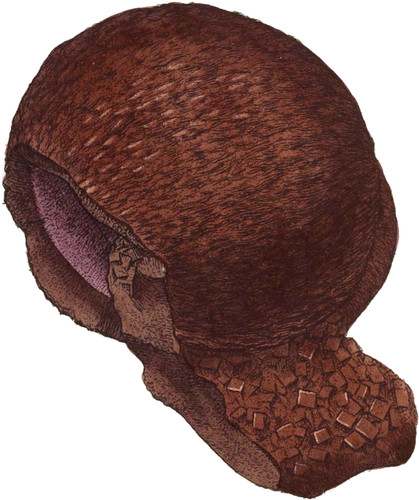 Enlarge
Enlarge
British Mineralogy
Oxide of Iron
- Div. 2. Imitative.
This specimen, although generally speaking it might be called an Hæmatitic Iron Ore, having most of the characters belonging to it, differs from that substance in not being striated, and in having more of an earthy fracture; it however may be placed near the Hæmatites, Whether it is a cast or change after crystallization may be difficult to determine. The lump at first looks like a globular Sulphate of Barytes (see tab. 96.) with the plated or tabular Crystals standing edgeways, but these are probably derived from the decomposition of Pyrites; they are however each of them so much blistered or covered with bubbles (see the right hand side of the lower figure, tab. 56. a formation common to many Hæmatites) that they cannot be made out. The hollow is lined with very thin-edged, probably tabular, Crystals, belonging to those of tab. 60. These are covered with a dark red or somewhat crimson powdery glimmer, sparkling like that of tab. 64. The stalk, or lower part, seems to have been cubical Iron Pyrites: see tab. 29 and 30, which are externally covered with bubbles. Possibly the whole once formed a Sulphuret of Iron or Pyrites, and having lost the Sulphur has become a mere Oxide of Iron. Such fortuitous circumstances as this was formed by, sometimes give the shapes of pears, apples, lemons, &c. which are as highly valued as if true petrifactions, and are very often difficult to be accounted for, especially by those who have not seen a series of specimens.
This specimen was found about the year 1799 near Staunton, about five miles from Ulverstone, Lancashire, and in that neighbourhood smaller balls have been found with the appearance of the inner part of this, which has been called velvety, downy, &c.

